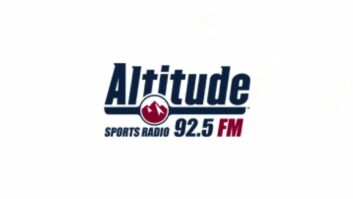FCC Commissioner Ajit Pai urged colleagues to push for AM reforms today and said he’s not in favor of an FM chip mandate.
Pai keynoted the “Future of Radio & Audio” symposium today in Toronto that was organized by the North American Broadcasters Association.
Noting that the agency “has been deeply divided on many key issues” lately, according to prepared remarks, the commissioner observed that “AM revitalization is one area where we could come together to advance the common good. And now is the time to take concrete action because time isn’t on the side of this grand old band.”
When RW last checked, the Media Bureau was still working on the AM revitalization item; sources tell Radio World the issue has been slowed, because, in part, of the agency’s focus on broadband.
Noting radio’s plethora of competition in the auto dash, Pai said broadcasters can no longer “just sit back passively” and expect listeners to flock to them. “Rather, to meet consumer demand, they need to be more aggressive, to package their content in different ways and deliver it through a variety of means.”
He called Internet streaming and podcasting “good examples” of radio reaching out to meet listeners where they are.
Related to that is radio trying to figure out how to reach mobile listeners; the FM chip-in-smartphones initiative was a big part of today’s NABA meeting. Mentioning that an FM chip is often activated in smartphones sold worldwide, except in those devices sold in the U.S., Pai said he “would love to have the functionality of being able to listen to FM stations over the air through my smartphone.”
He did not, however, endorse the government getting involved in the issue by imposing a mandate on wireless carriers to embed and activate and FM chip. Though NAB backed off the mandate idea a while ago, others in the industry have kept the mandate idea alive.
“As a strong supporter of the free market, I don’t believe that it’s the U.S. government’s place to intervene in this area, especially given the robust competition we see between wireless carriers. If there is consumer demand for activating FM chips — and I believe that there is — I am optimistic that we will continue to see progress on this issue as a result of commercial negotiations and competitive pressure in the private marketplace,” Pai said, according to the prepared remarks.
Rhetorically asking what government’s role in regulating radio should be, Pai said that the government needs to set rules and modernize them and its enforce licensing regime. However, the government should be cautious about making “across-the-board” industry changes, according to the commissioner.
When possible, change should come from the bottom up. “For example, Canada’s unsuccessful attempt to transition AM and FM broadcasters to Digital Audio Broadcasting in the L Band serves as a sober reminder that markets will not necessarily evolve as regulators envision,” said Pai.
Indeed, speaking to Canadian broadcast sources recently about Canada’s digital transition, they tell RW that some Canadian broadcasters now realize they should use the technology the U.S. has adopted; we’ve reported HD Radio is being tested again in Canada.
NABA is made up of member broadcasters from Canada, the U.S. and Mexico, which has also begun an HD Radio rollout. North American automakers, their suppliers, smartphone makers and their carriers would prefer a unified digital radio technology platform.












